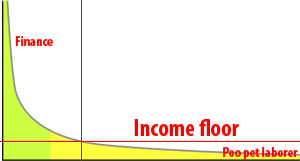Why You Keep Buying Seth Godin’s Books, Even Though You Already Know The Material
Marketer and author Seth Godin is renowned for his short, punchy, effective books about thinking about your business. He’s a bestseller, and his books are widely lauded. Yet inside his books, there’s nothing supremely groundbreaking. You can summarize his last few books in just a two lines:
+ Have a unique and different product worth talking about
+ Tell authentic stories about your stuff
Given this, why do people continue to buy his books like crazy? Seth has mastered a form of writing that only a few other authors have captured, including my teacher’s teacher, Stephen K. Hayes. It’s the okuden, esoteric style of storytelling.
What is esoteric? Esoteric is an experience that originates on the inside. You can tell someone all about the taste of an apple, but if they’ve never eaten one, your words will never approach the real thing. Likewise, the things that arise from inside your own mind are far more powerful than anything external.
When you read a Seth Godin book or attend a Stephen K. Hayes seminar, you’ll find your own mind “wandering” – by design. Both authors will get you thinking about stories of your own, about your own business, about your own training, and as they present ideas you already know, they’re encouraging your mind to actually apply those ideas to your stuff, which is what makes them valuable.
How does Seth do it? Among the many skills, there are three that stand out.
1. Embedded and actual questions. Throughout his text, you’ll find a surprising number of questions that you mentally answer as you read. This fosters engagement in the copy and gets your mind going. Isn’t it funny how well that works?
2. Writing in second person. Grammar school teachers tell you writing in second person is a no-no. Scholarly journals command third person passive voice. Both disengage the reader from the text. Seth writes heavily in second person active voice – just like you are now.
3. Detailed stories. Seth tells a lot of stories in his books, almost-case studies with quirky, human details and a focus on emotion. Doing so gives him access to not only the rational part of your brain, but the emotional part, too, and also encourages your brain to start retelling its own stories to you.
What tricks and skills do YOU use to capture the attention of your audience?

